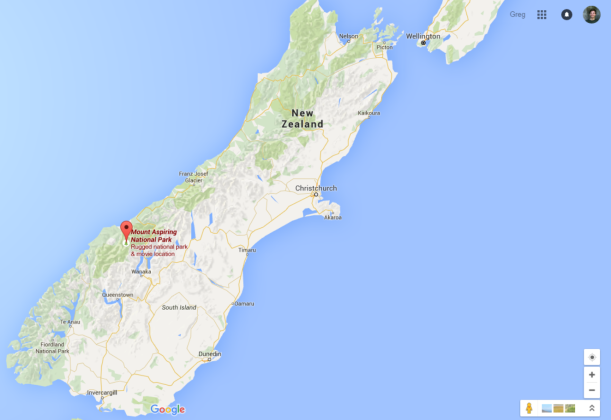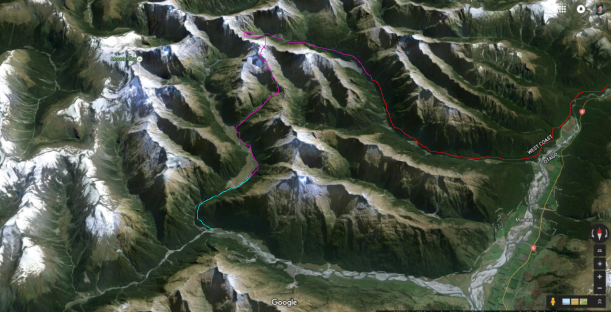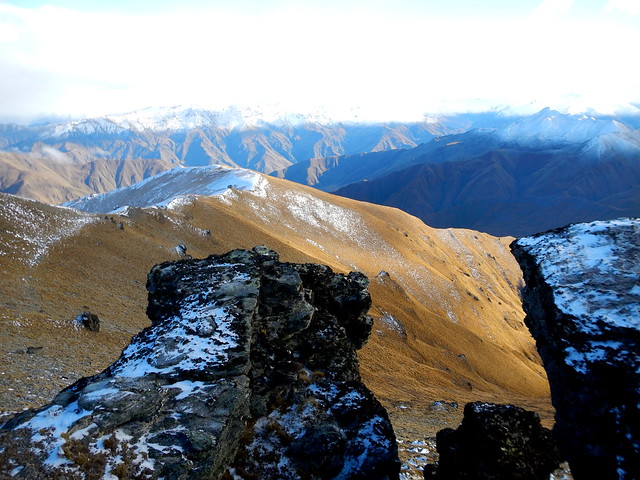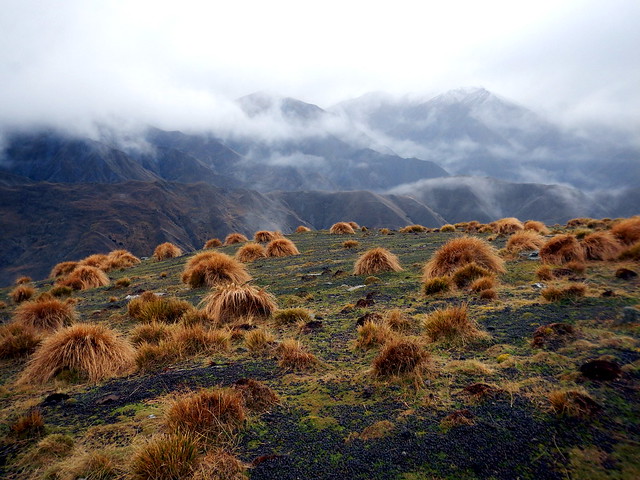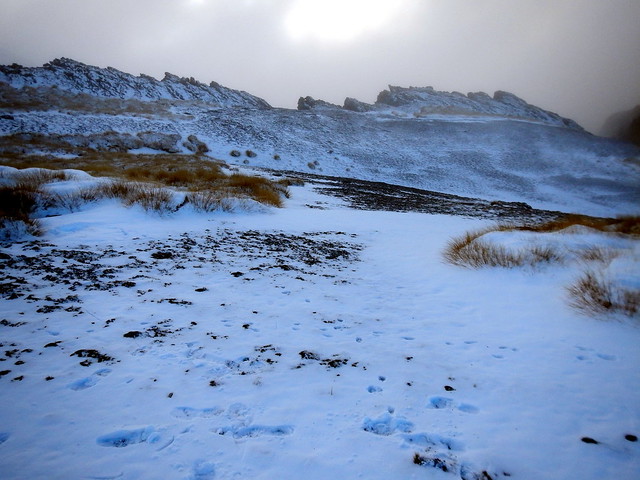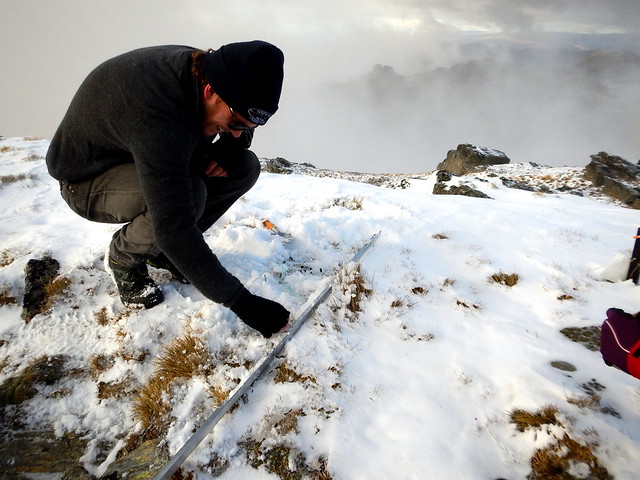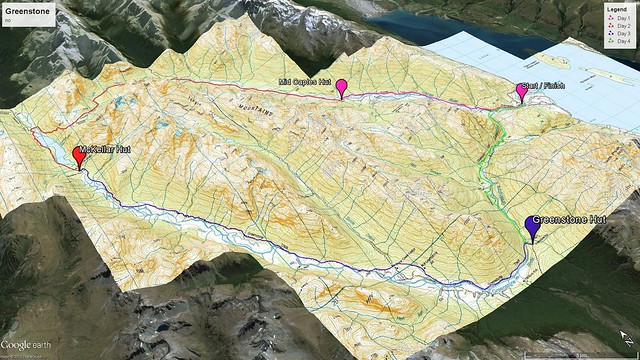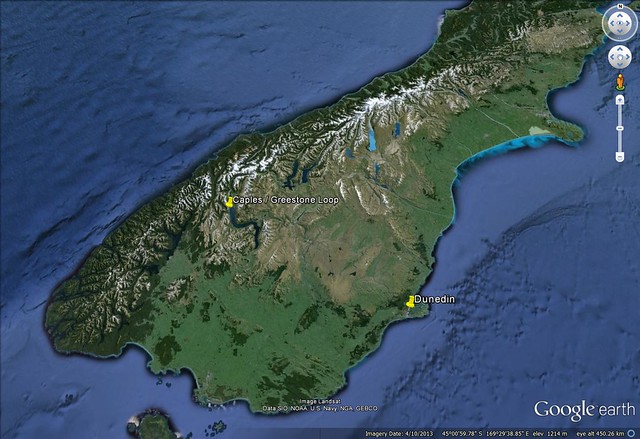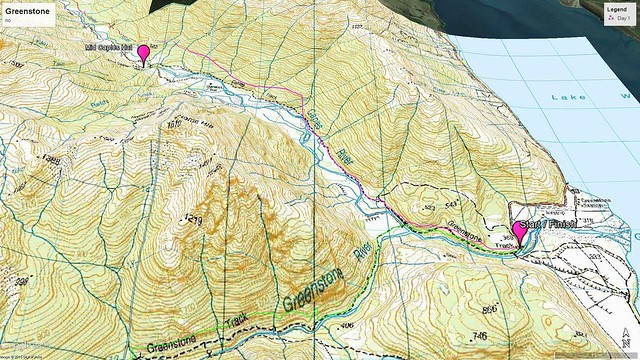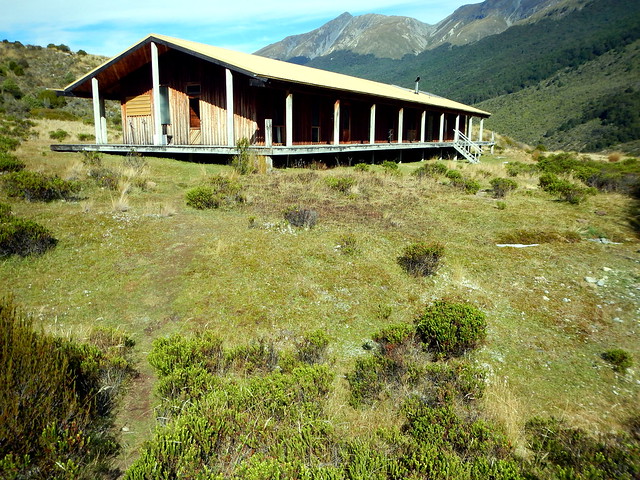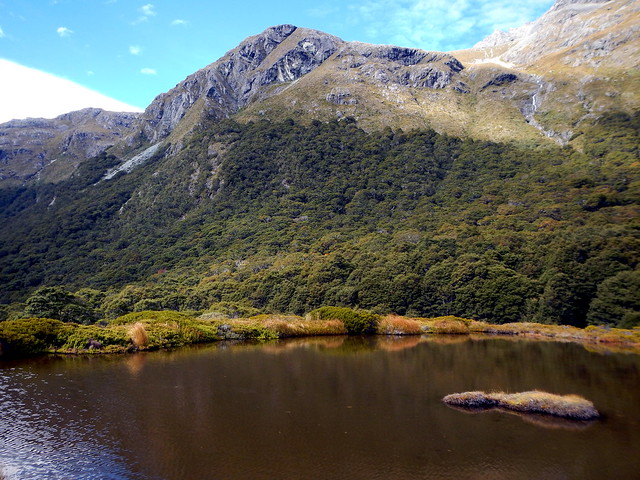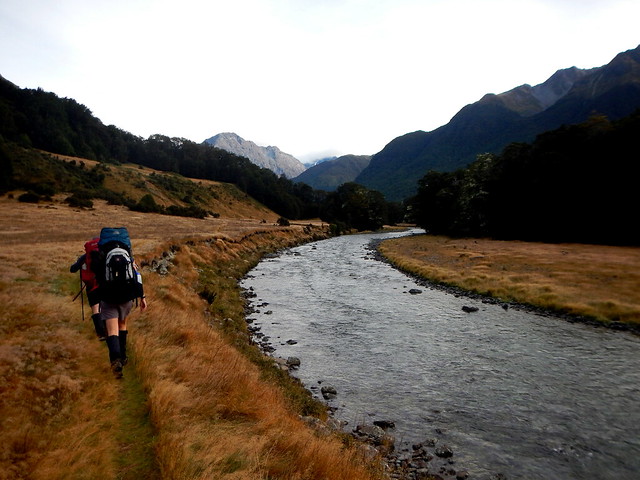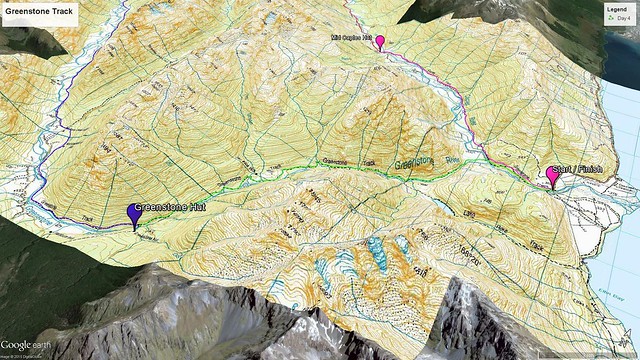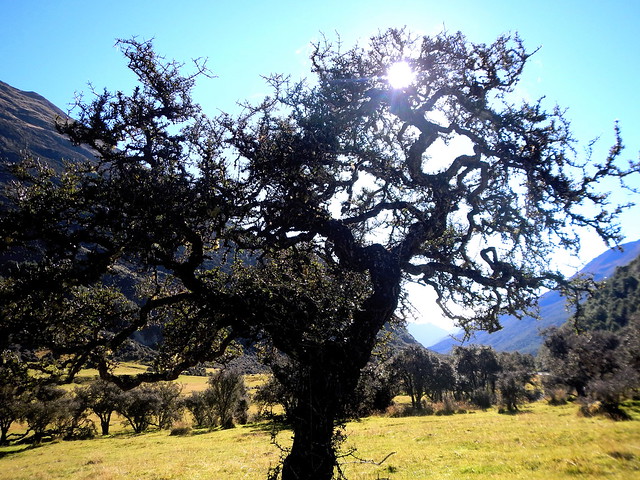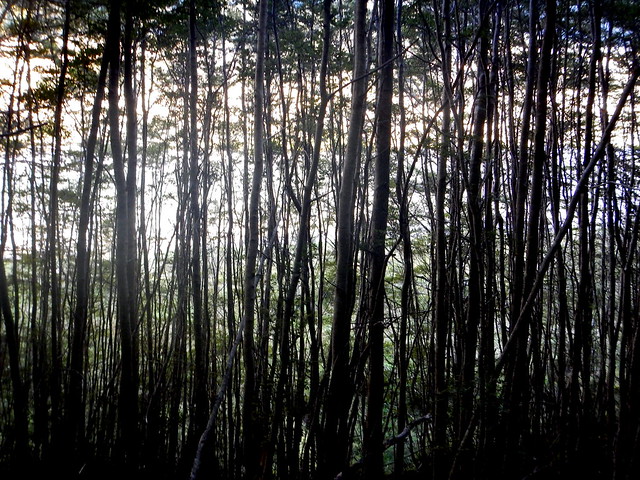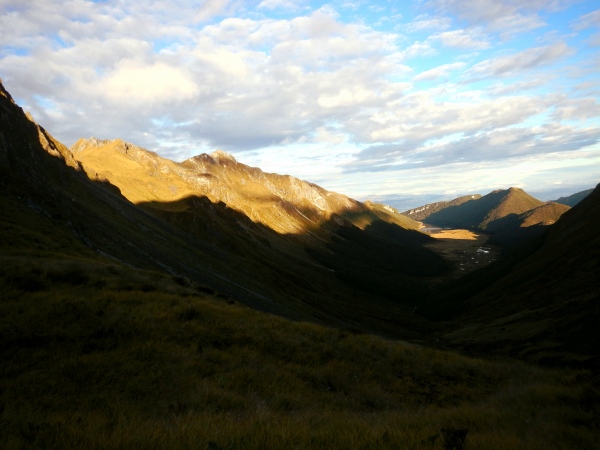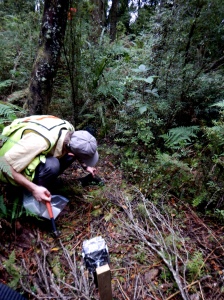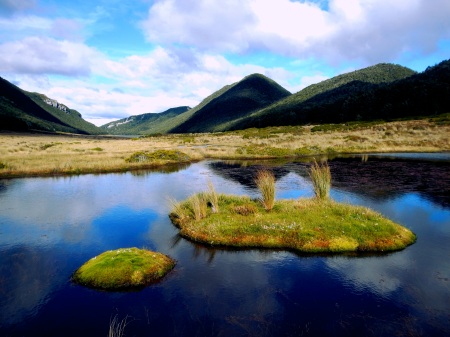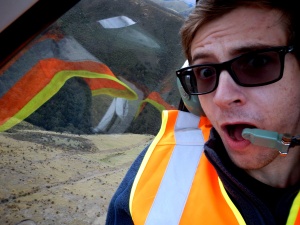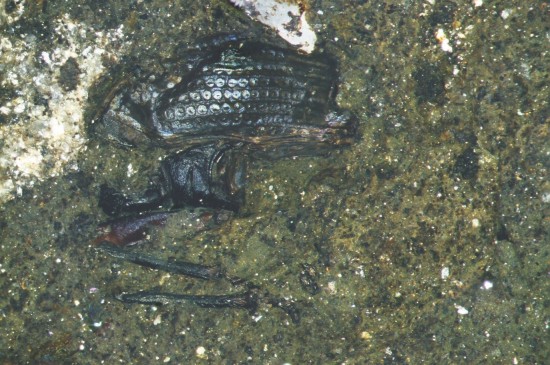timeline: 4 days (3 nights)
distance traveled: 53.5 kilometers
elevation change: 950 meters
maximum elevation: 1,154 meters
itinerary: car park at Te Anau Downs -> catamaran ride to Glade Warf -> Clinton Hut -> wetland board walk -> Mintaro Hut -> McKinnon Pass -> Dumpling Hut -> Sand Fly Point -> boat to Milford Sound visitor’s center
the crew: Tom Nelson and Sarah Nelson

Fiordland National Park is located in Southland, on the south west coast of the South Island. It is the largest of the national parks at 12,500m^2. It’s name derives from a number of deep fiords that were carved out by glaciers in past ice ages.
Located in Fiordland National Park, the Milford Sound Track has much to offer. From New Zealand’s largest water fall to snow dusted alpine cairns, there is a reason it is the countries most popular track. My father and sister came down for a 22 day visit and this was the final stop on the itinerary (I wanted to make sure they would sleep well on the plane). In the end we agreed this was the most physically demanding thing any of us had done. We where happy to have gone through it together.

Overview of the trip. Day 1 is shown in red (5 km). Day 2 is shown in yellow (16.5 km). Day 3 is shown in turquoise (14 km). Day 4 is shown in purple (18 km).
The first day consisted of a short boat ride and a short walk. As the boat approached the beginning of the track on Lake Te Anau we were able to get some great views of the rocky hills shrouded in mist. We were happy to see anything as Fiordland is notorious for it’s rainfall – more than 200 days a year with 6,800 mm annually on average. Once we reached the track it was a short walk through beech forest to the Clinton Hut. On the way we stopped to check out a bog board walk that had some cool plants. The weather was great – almost no rain.

The view from the boat on Lake Te Anau as we approached the trail head. Fiordland is overcast 2 out of every 3 days on average. This climate is driven by predominantly south westerly winds blowing up from Antarctica. The ocean air is moist, and as it rises over the mountains it loses density subsequently dropping it’s moisture on the land below.
The second day is decent length with a slight incline, all the while following the Clinton River up its course. The track begins in beech forest, and shifts towards more scrub as you gain elevation. As you head deeper into the valley the rock faces rise high around you, providing some much needed existential perspective and many waterfalls. Mintaro Hut is located at the head of the river, and has a porch overlooking the surrounding mountains peaks. Again we got lucky with only light showers.

Ferns (pteridophytes) are an ancient group of plants thought to have originated during the Devonian Period of the Paleozoic Era 360 million years ago. Their vascular tissue set them apart from the plants that came before them, and reproduction through spores and frond leaf architecture set them apart from plants that came after.
The third day was the most arduous. Although short in distance, this is the day you must hike up and over McKinnon Pass. The track starts with a great deal of switch backs, with the vegetation shifting to subalpine with numerous buttercups and daisies. It started snowing as we approached the top, and the snow covered flowers and grass fields provided some unexpectedly beautiful white scenes as we were buffeted by wind. At the top we stopped for a much needed break and some hot coffee. The decent was not any easier – it was steeper as well as wet and slippery. There is a side track that takes you to see Sutherland Falls, the highest waterfall in New Zealand. Once we made it down the rest of the walk is nice and flat until you reach Dumpling Hut. With some snow and wind on top of the pass and some showers as we descended we had a decent day for tramping.

A snow dusted cairn near the McKinnon Pass. These ponds occupy amphitheater shaped depressions once occupied by glaciers. The large ice mass sculpted and depressed the hard granite, which now holds the water like a large rock bowl.
The final day is a nice flat hike out to the boat pick up location. The track follows the Arthur River down the valley through more beech forest. The trail cuts through some cool rock passages, has a few bridges, and some real cool boardwalks. Only on the final day did we feel the true power of Fiordland precipitation. With heavy rain starting early in the morning, we were soaked through before tea time. However, the water added greatly to the experience. The valley walls were littered with waterfalls – literally too many to count. I had a hard time seeing them through my glasses, but it was worth it.

So many waterfalls!
We were happy to get inside and warm up/dry off after the trip. Once in Te Anau we went straight to a cafe, had a big feed, and chugged some beer. After that, spontaneous road trip back to Dunners! Their flight home was the next day. Overall, the trip was a major success – the family bonded over the four days and we all came out super fit. It was also the first time I organized a trip by myself which was a good challenge. We are hoping to do another family expedition in the not too distant future!

Midwest family getting damp in the NZ bush.
Milford Sound Track is New Zealand’s most popular great walk for a good reason. The scenery, vegetation, and experience are worth the effort and money. It is of moderate difficulty so anyone who has been on a few other tracks should have no problems with this one.
See you on the trails,
-GTN



